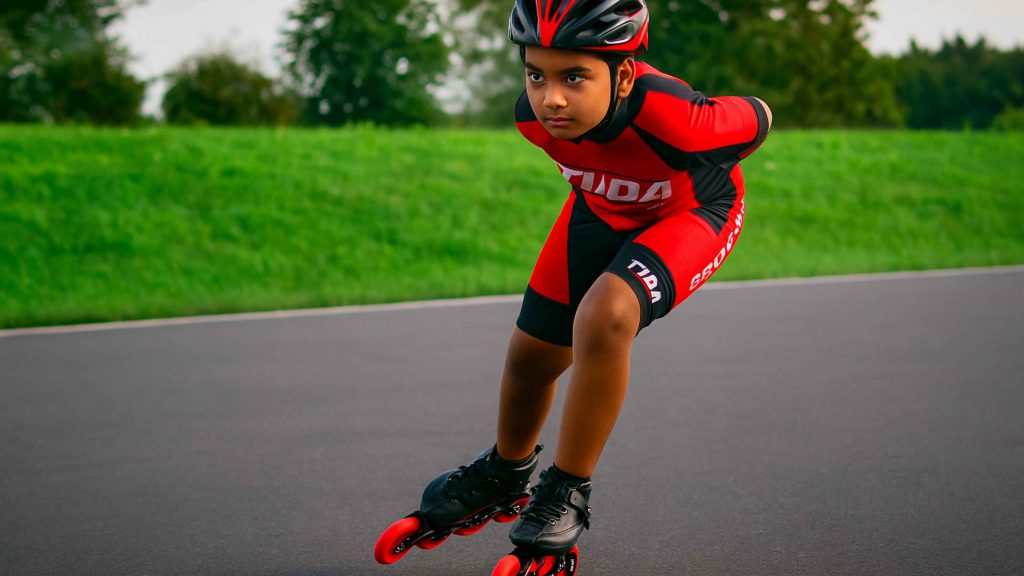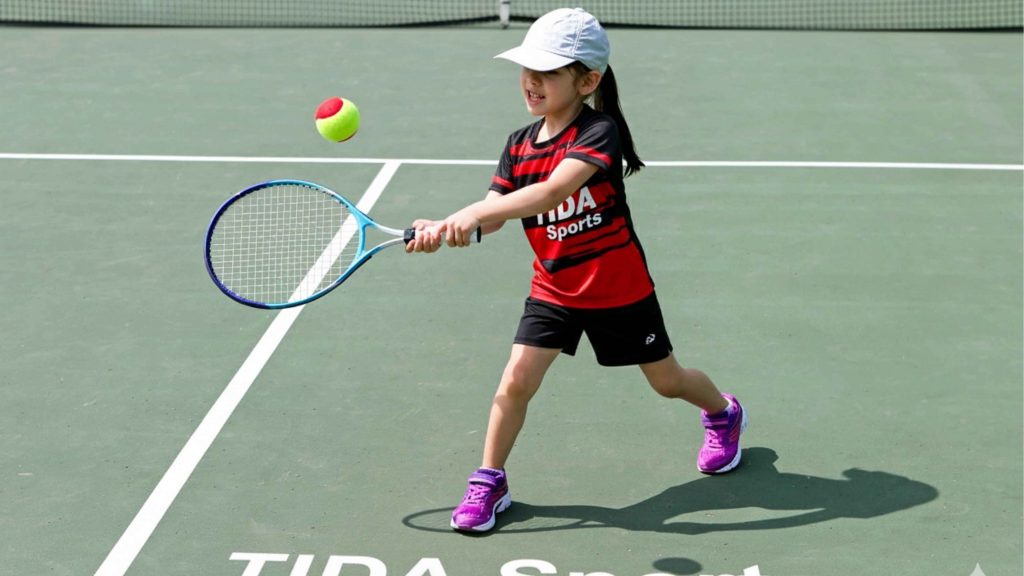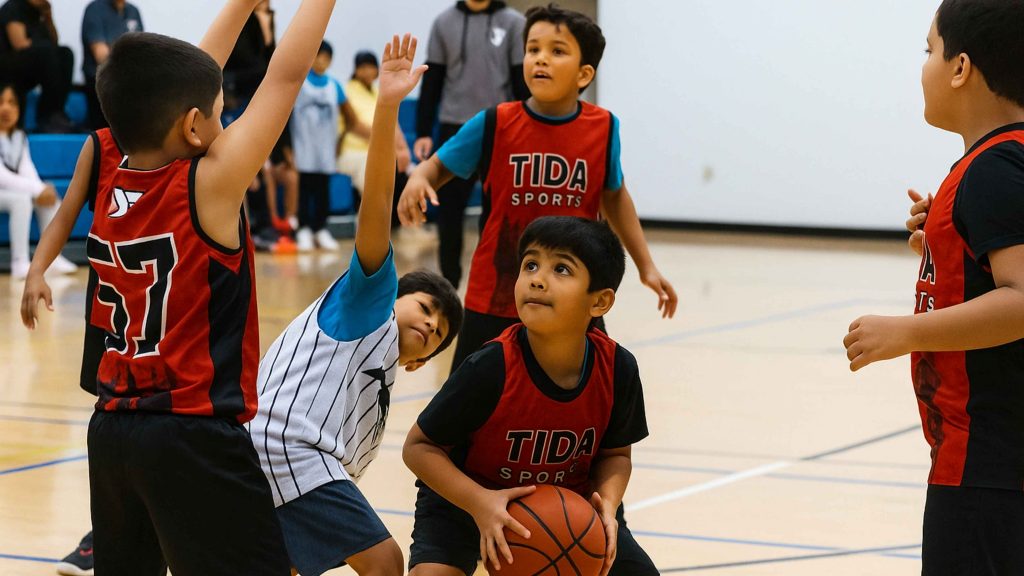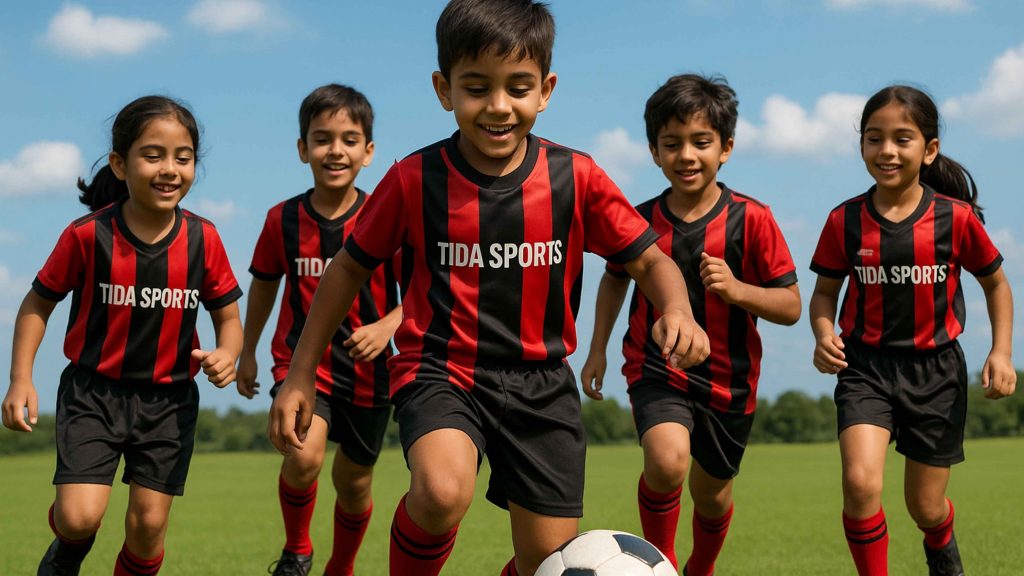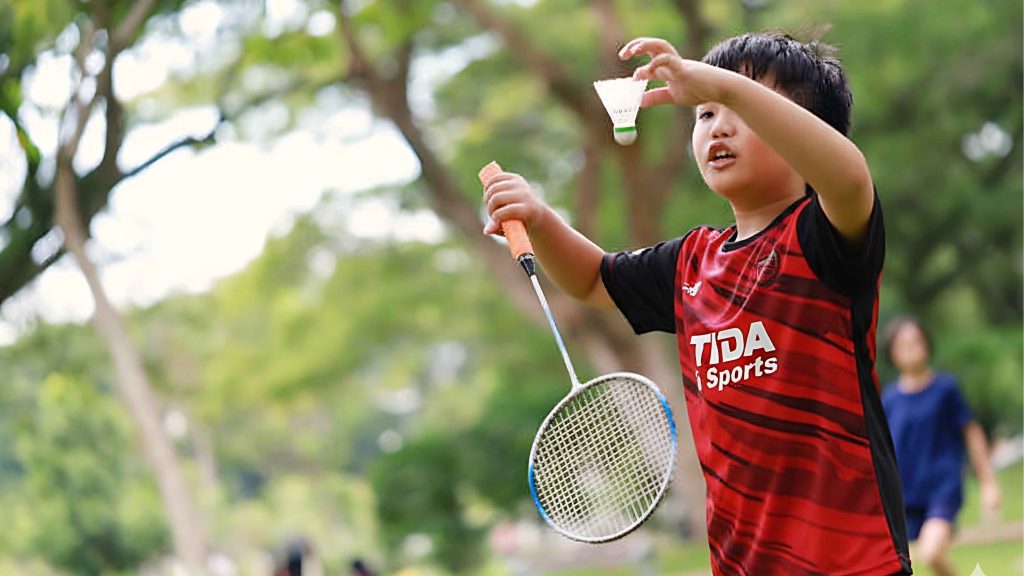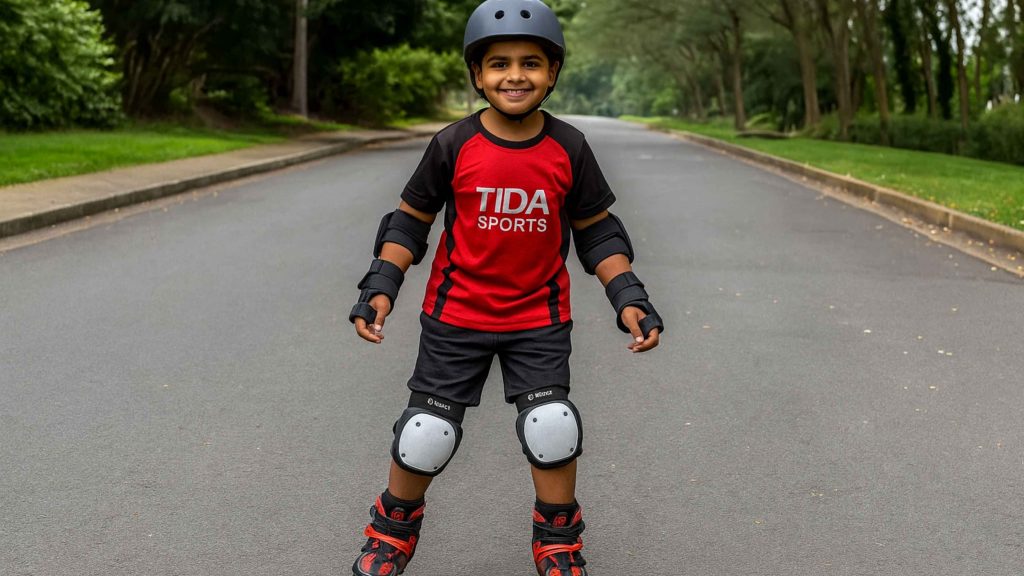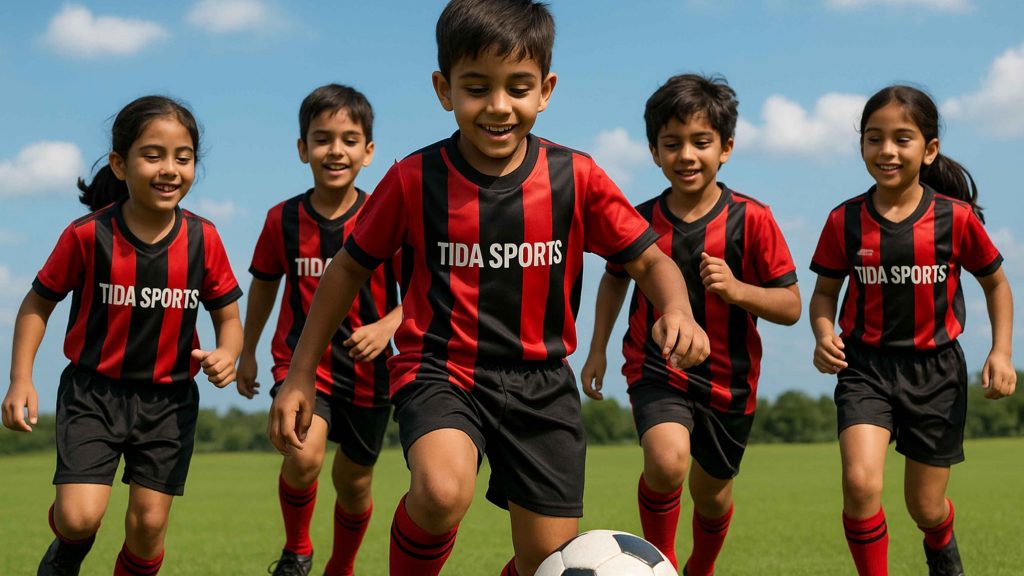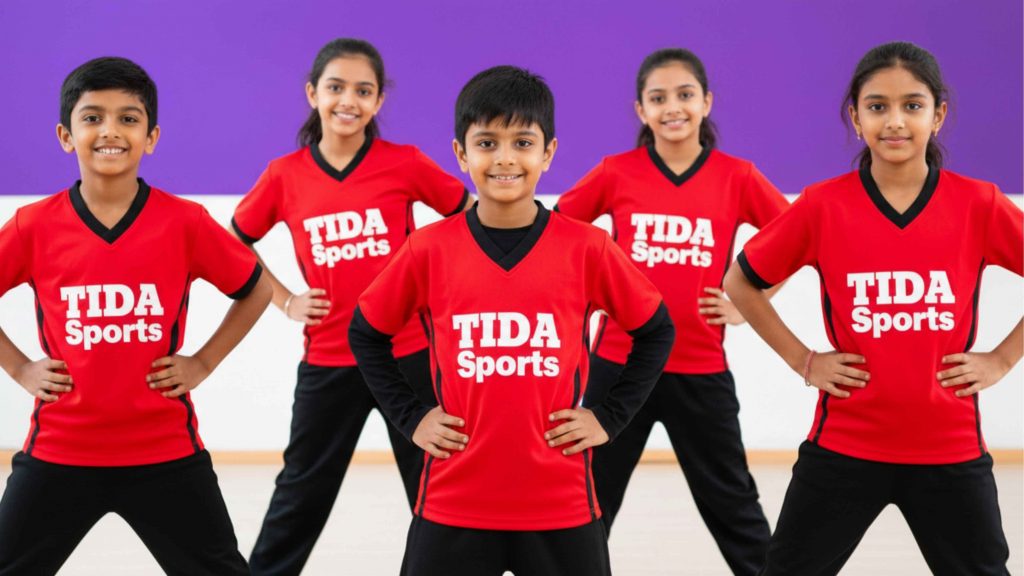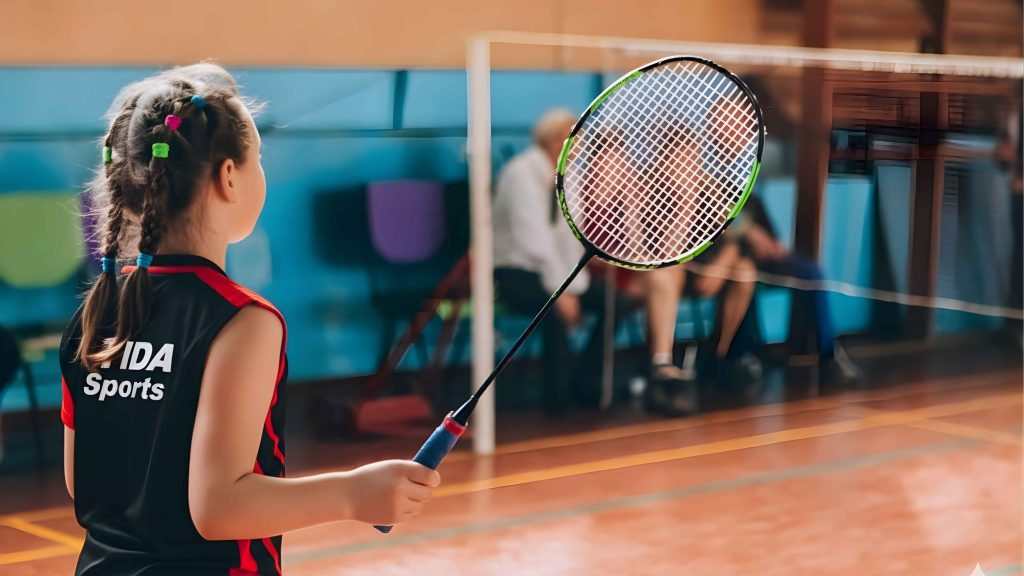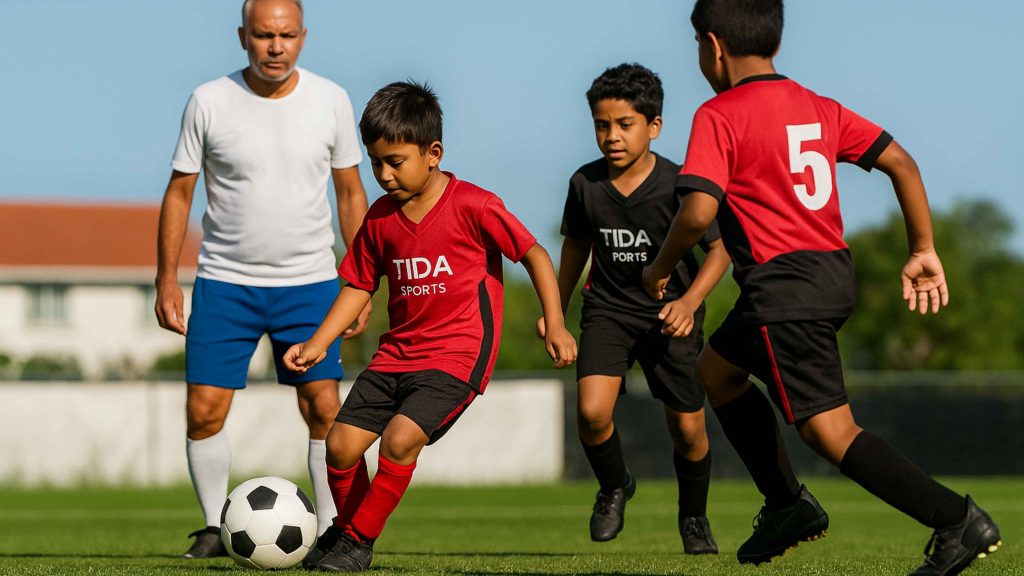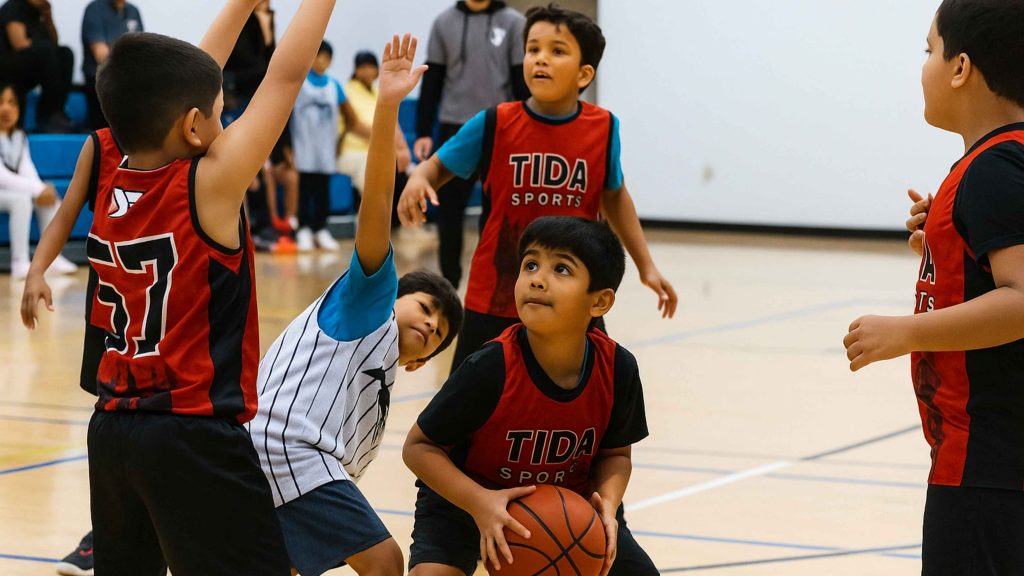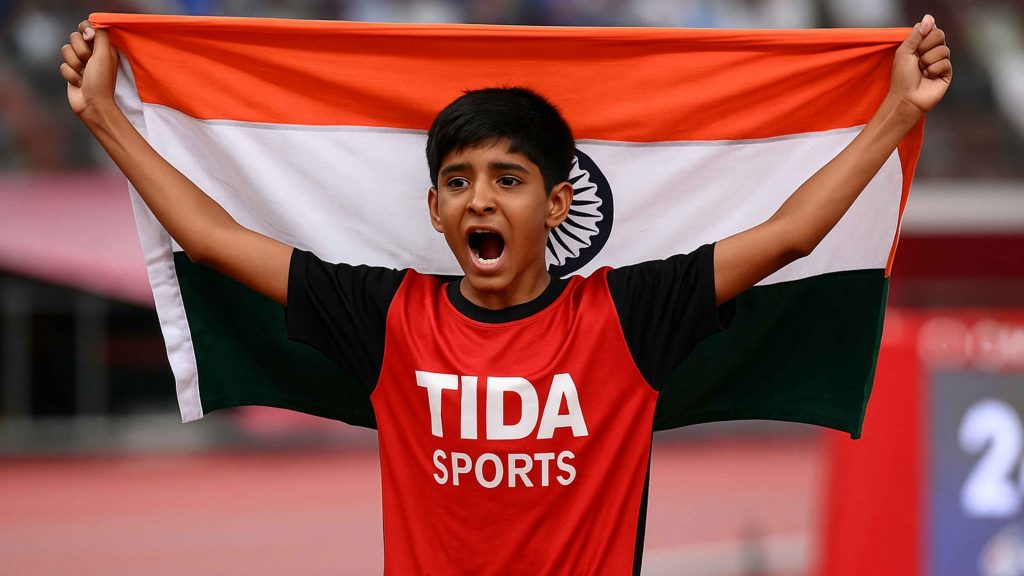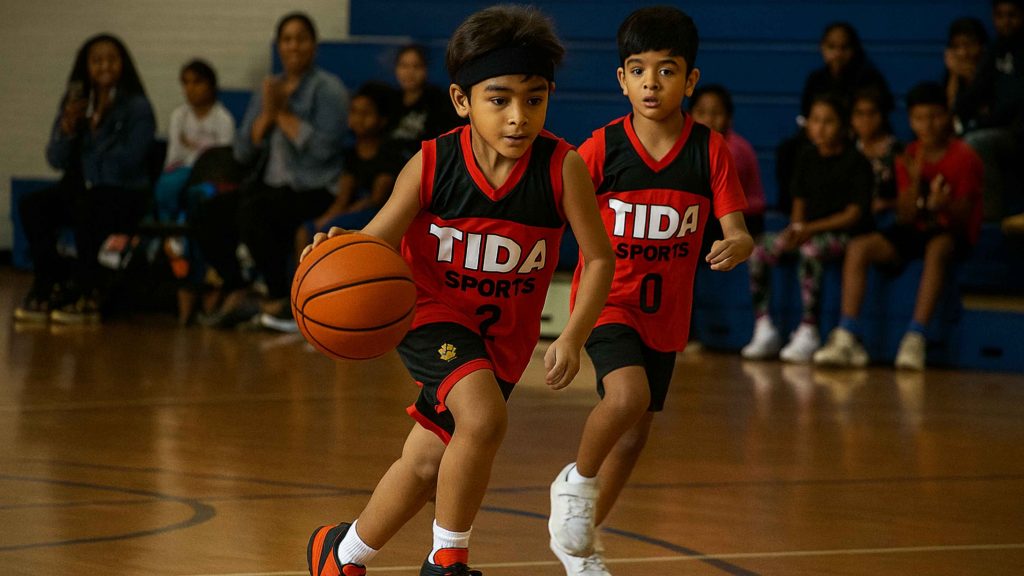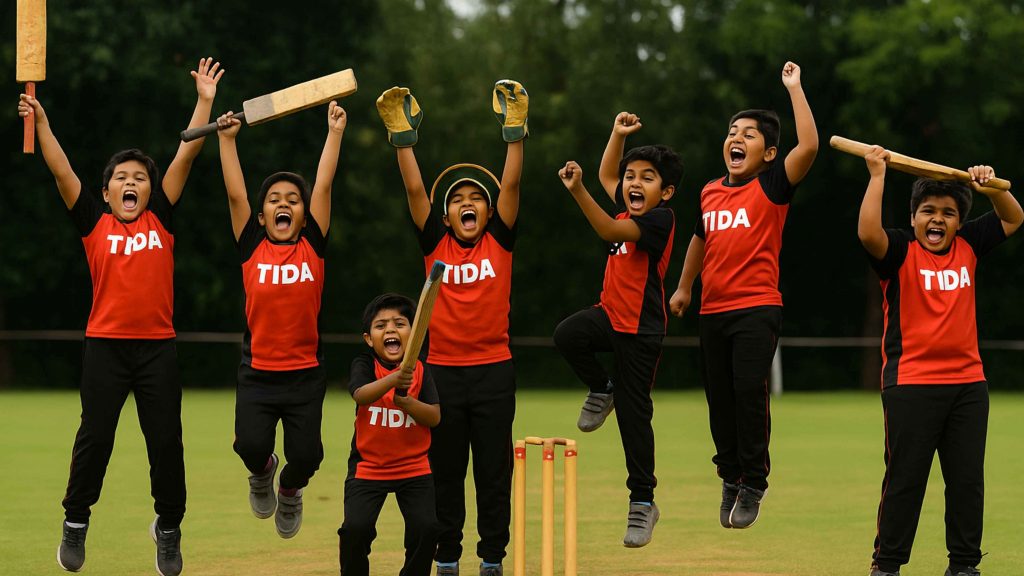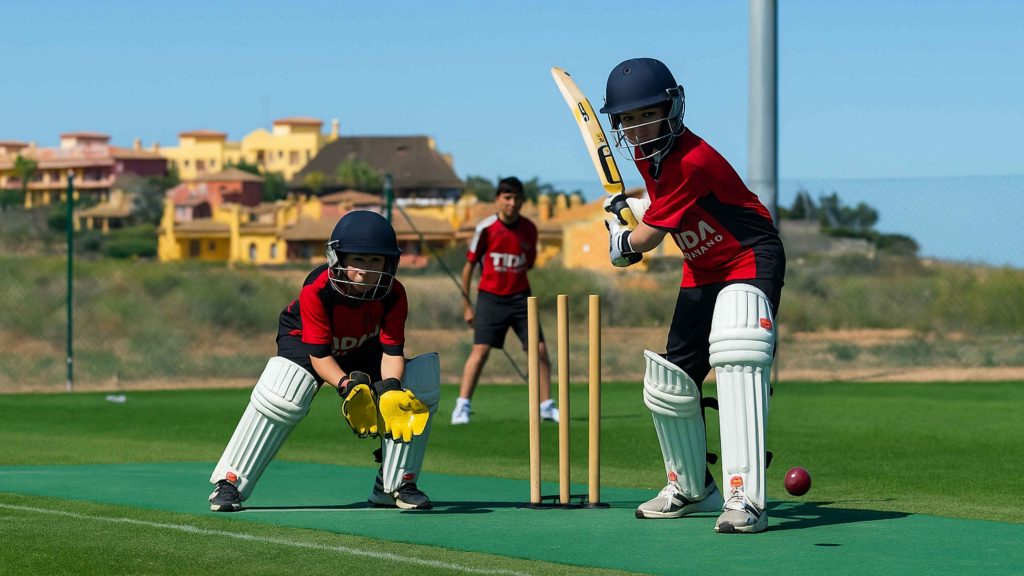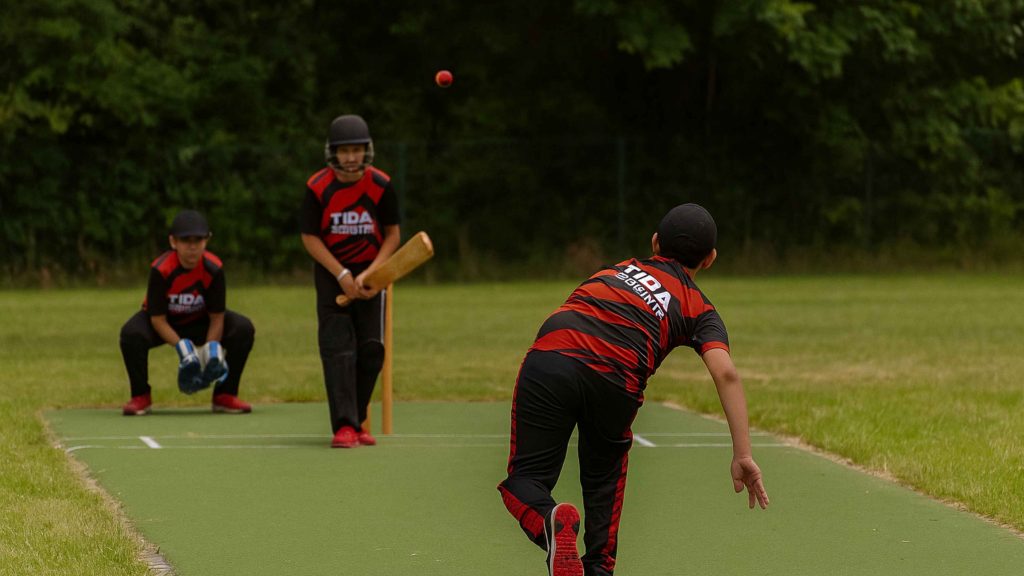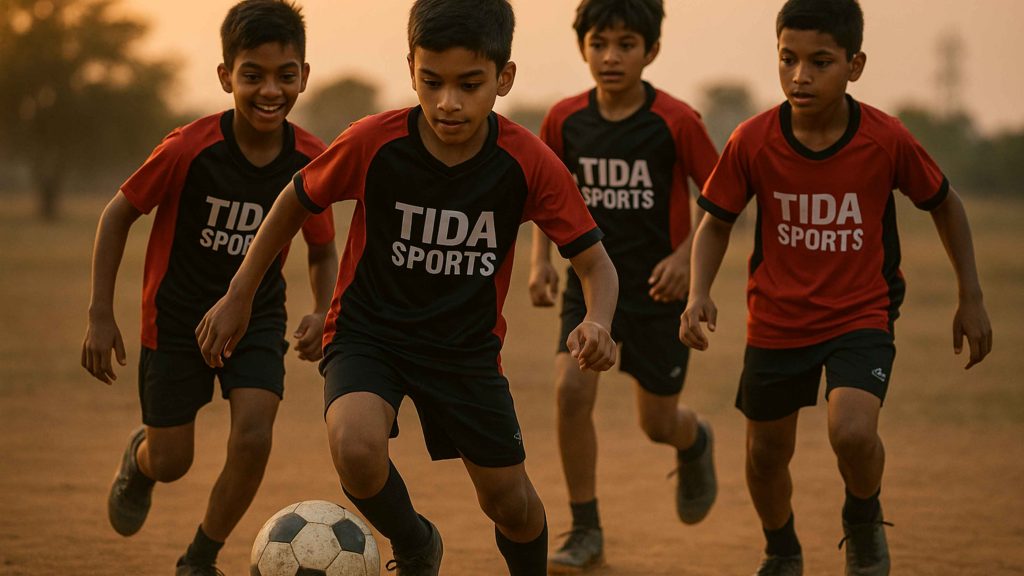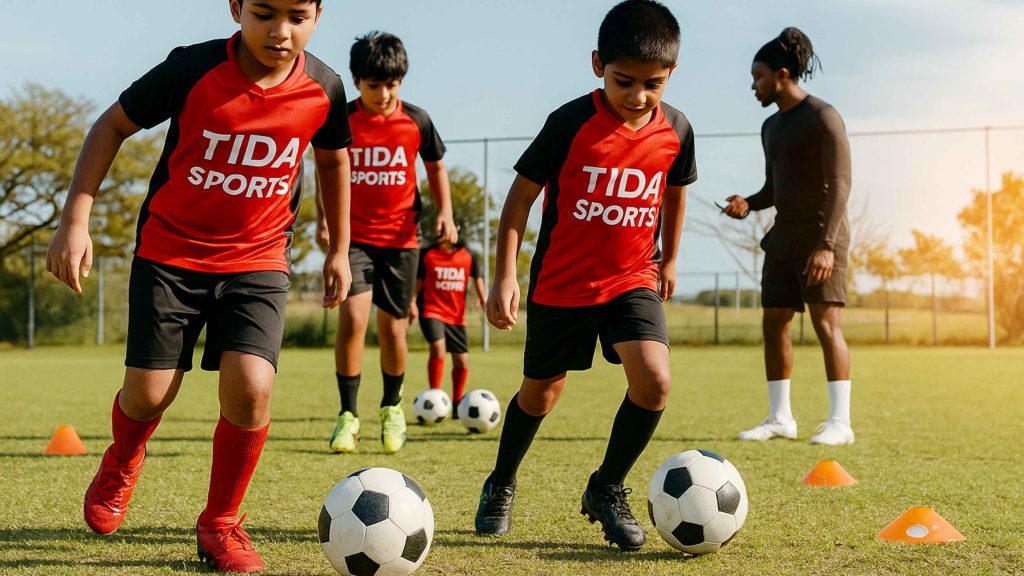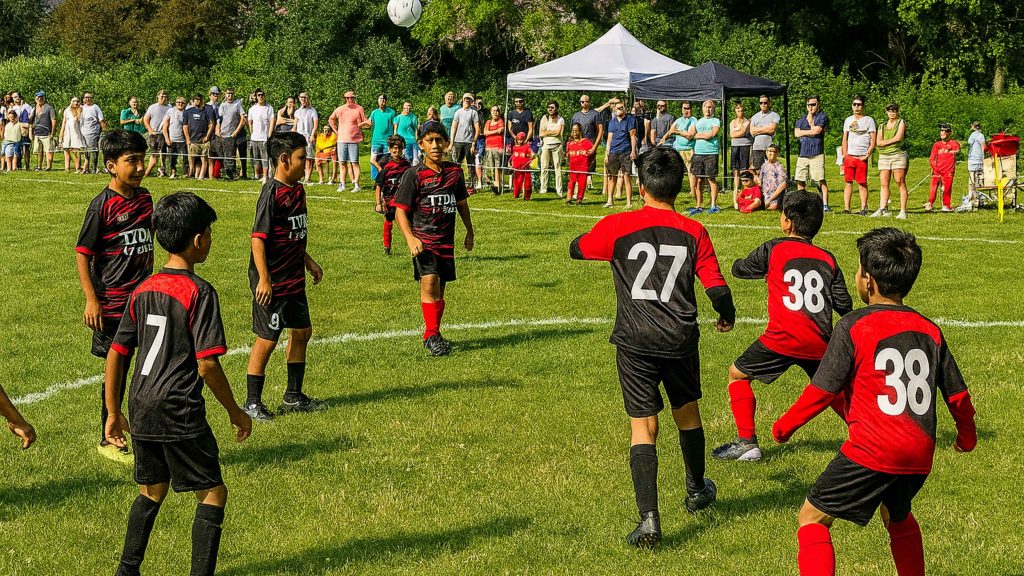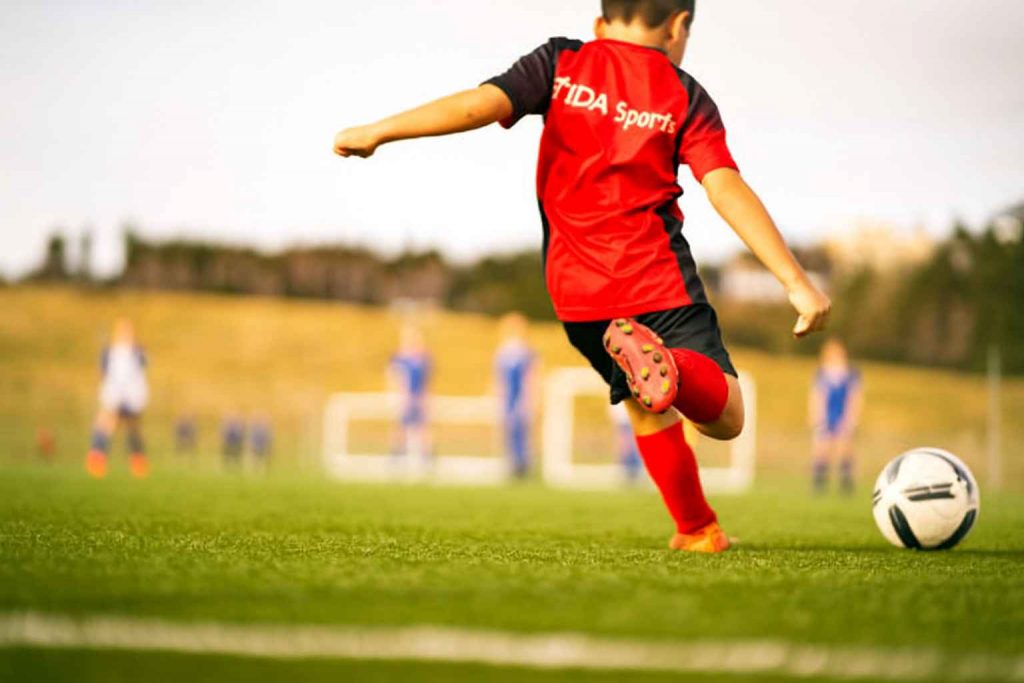
Key points:
- Physical fitness builds strength, stamina, and confidence.
- Active kids perform better in school and stay happier.
- Fitness improves both body and mind.
- TIDA Sports helps kids develop lifelong healthy habits.
Introduction
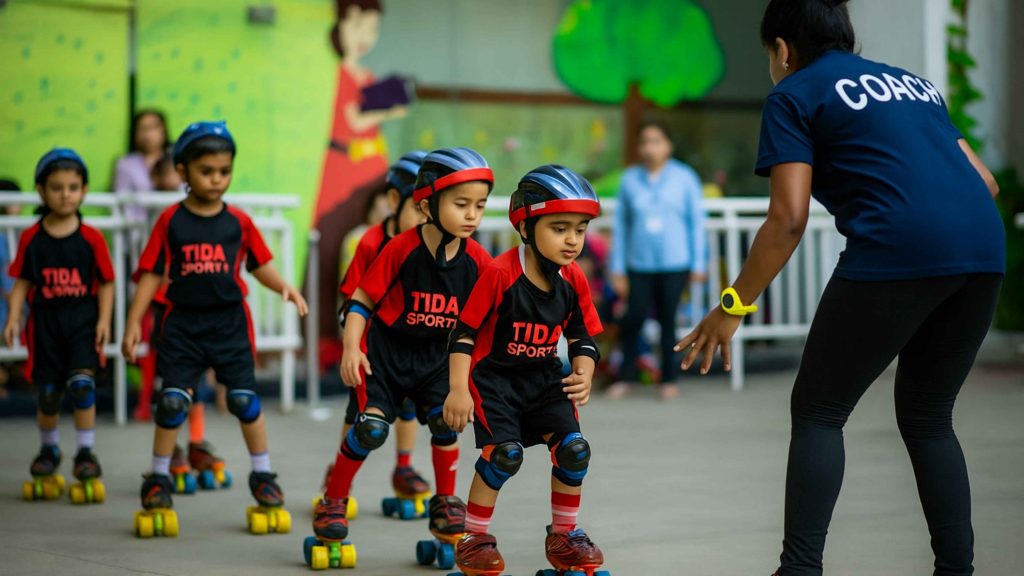
In today’s world, children spend more time indoors — on phones, tablets, or watching TV — and less time playing outside. This shift has caused problems like weak immunity, less focus, and even poor posture. That’s why physical fitness matters for every child.
Being active is not just about playing games. It helps in overall growth — physically, mentally, and emotionally. At TIDA Sports Academy, we believe that fitness is the foundation for a happy and successful childhood. Through fun sports programs, TIDA encourages children to move, play, and grow stronger every day.
What Does Physical Fitness Mean for Kids?
Physical fitness means keeping the body strong, flexible, and healthy.
For children, it’s about enjoying movement, learning balance, and building strength.
Fitness includes:
- Endurance: The ability to play longer without getting tired.
- Strength: Strong muscles and bones that support growth.
- Flexibility: Easy body movement and fewer injuries.
- Coordination: Better balance and motor control.
At TIDA Sports, every sport — from football to skating — helps improve these key fitness areas.
Why Fitness Is Important for Every Child

1. Builds Strong Bodies
When children stay active, their bones and muscles grow stronger. Sports like football, cricket, or basketball help improve posture, coordination, and agility. Regular exercise also reduces the risk of obesity and health problems later in life.
2. Boosts Brain Power
Physical activity increases blood flow to the brain, which improves memory, focus, and creativity. Studies show that kids who play sports often perform better in school. That’s why TIDA Sports promotes the balance of sports and studies.
3. Improves Mental Health
Sports help children release energy and manage emotions better. Running, jumping, and playing make kids feel happier and more relaxed. It reduces anxiety and builds confidence.
4. Builds Discipline and Teamwork
Fitness through sports teaches time management, teamwork, and leadership. When kids play together, they learn to respect others, share, and stay motivated — lessons that help in every part of life.
5. Encourages Healthy Lifestyle Habits
TIDA Sports also teaches children the importance of good nutrition, proper sleep, and screen-time control. These small habits create a strong foundation for lifelong fitness.
The TIDA Sports Fitness Approach
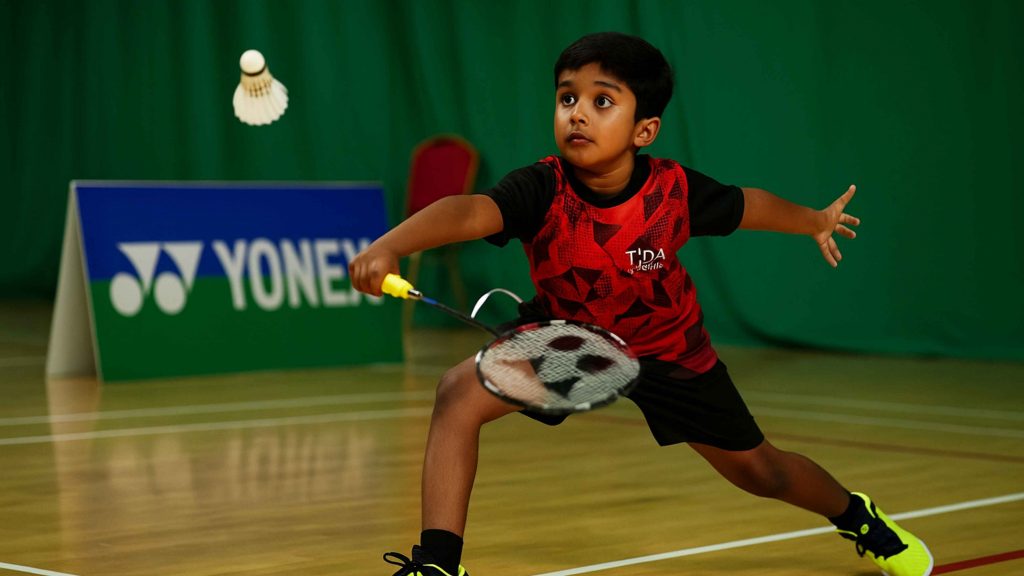
At TIDA Sports Academy, we believe fitness should be fun and safe.
That’s why our programs are designed for kids aged 4 to 16 years, with a mix of sports and fitness games that keep them excited to move.
Each session includes:
- Warm-up exercises – to prepare the body.
- Skill training – like dribbling, running, or balancing.
- Fun games – that build stamina and teamwork.
- Cool-down stretches – to relax muscles and prevent injuries.
Our trained coaches make sure every child enjoys the process while improving their strength, focus, and confidence.
Sports That Build Fitness at TIDA Sports
TIDA Sports offers multiple activities to help kids find their passion and stay fit at the same time:
⚽ Football: Improves balance, coordination, and teamwork.
🏏 Cricket: Builds hand-eye coordination and patience.
🏀 Basketball: Increases stamina, focus, and agility.
⛸️ Skating: Strengthens legs and improves flexibility.
🕺 Dance: Boosts rhythm, creativity, and body control.
🥋 Taekwondo: Enhances strength, discipline, and confidence.
🧘 Yoga: Calms the mind and builds balance and posture.
Every child can choose what they love, and our coaches help them progress step by step.
How TIDA Sports Encourages Daily Activity
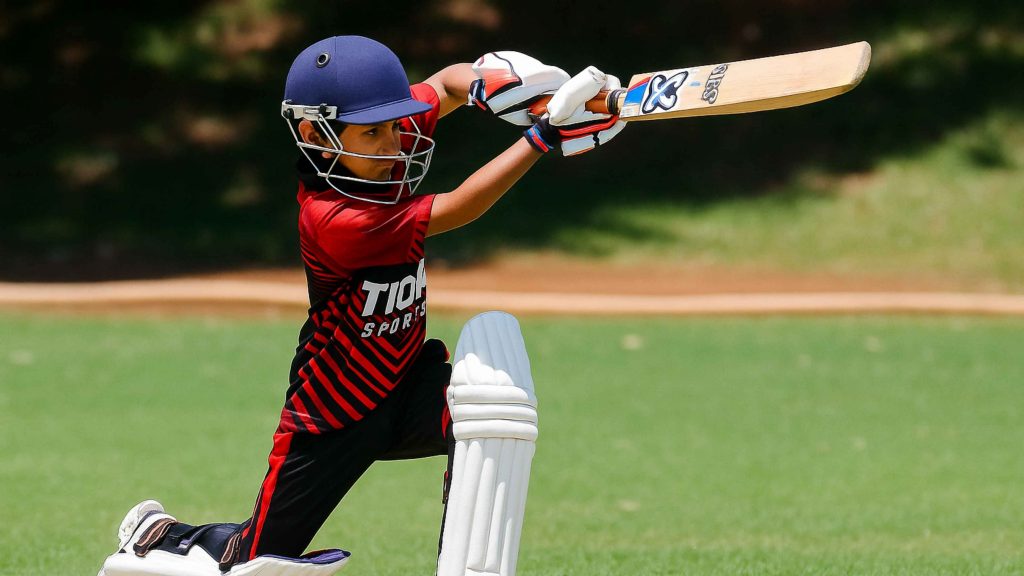
Many children today struggle with fitness because of busy school schedules or digital distractions. TIDA Sports solves this problem by offering:
- Evening sports academies – perfect for after-school activity.
- Weekend fitness sessions – for extra practice and fun.
- In-school programs – combining sports with learning.
This makes it easy for kids to stay active regularly without affecting their studies.
Fitness and Academic Success
Physical activity doesn’t take away from academics — it actually supports it.
Active kids have sharper focus, better memory, and improved problem-solving skills.
At TIDA Sports, we’ve seen how sports help children perform better in school, stay motivated, and manage stress during exams. Sports teach discipline — a skill that helps them in both classrooms and playgrounds.
Parental Role in Kids’ Fitness
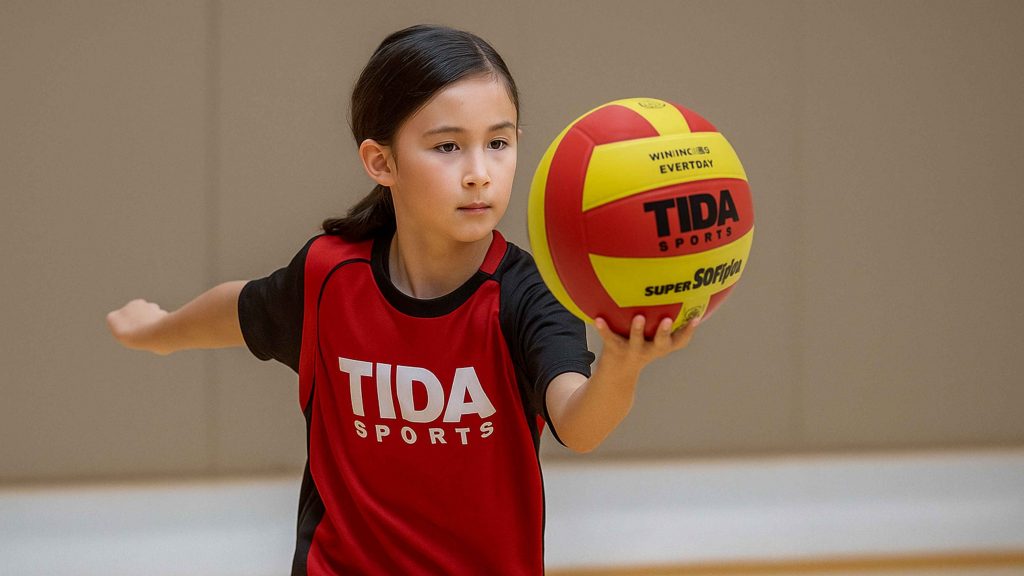
Parents play a big role in encouraging fitness.
Simple steps like joining outdoor play, reducing screen time, and enrolling kids in a trusted sports academy can make a huge difference.
Parents can count on TIDA Sports to provide a safe, structured, and enjoyable environment where their kids can learn, play, and grow.
TIDA Sports Academies Across India
By partnering with schools nationwide, the organization brings expert coaching and training conveniently close to home.
Some of the well-known school academies include:
- Anee’s School Sports Academy – Football, Cricket, Dance, Badminton
- GD Goenka Sports Academy – Cricket, Basketball, Taekwondo, Badminton
- St. Mary’s School Academies – Football, Cricket, Skating, Basketball
- Ashiana School Academies – Football, Dance, Yoga, Badminton
- Bhavan Vidyalaya Sports Academies – Football, Dance, Taekwondo
Each center follows the same mission — to make fitness and sports a part of every child’s daily life.
FAQs
Q1: What age group can join TIDA Sports?
Kids between 4 and 16 years can join our programs.
Q2: Is TIDA Sports only for advanced players?
No, beginners are always welcome. We train every child based on their level.
Q3: How does TIDA Sports ensure safety?
All sessions are supervised by trained coaches with proper warm-ups and gear.
Q4: Can sports improve my child’s focus in school?
Yes, regular physical activity improves brain function and concentration.
Q5: What sports are available at TIDA Sports?
Football, Cricket, Basketball, Skating, Dance, Yoga, and Taekwondo.
Conclusion
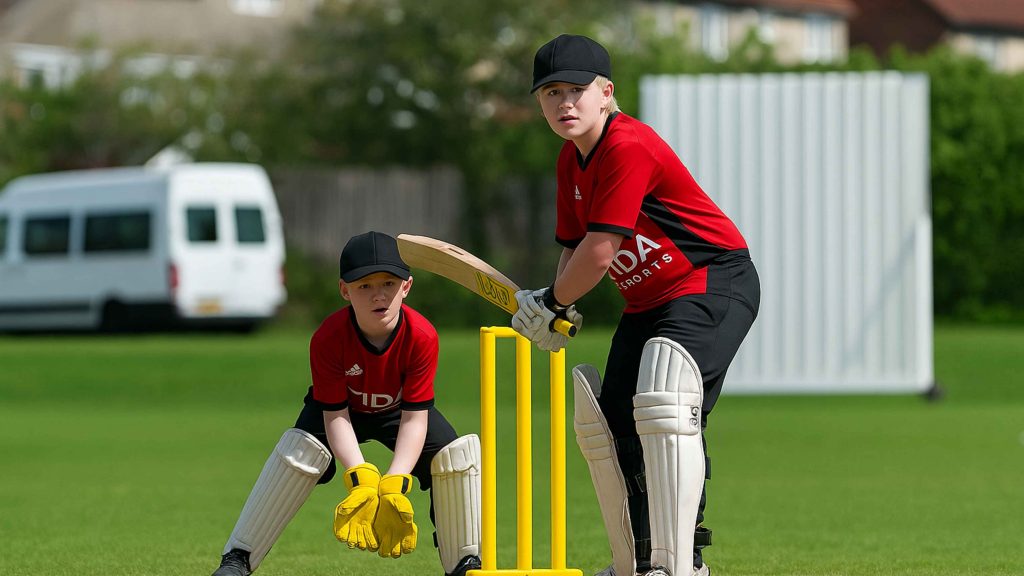
Physical fitness is not just about exercise — it’s about preparing kids for life.
It teaches them strength, confidence, and the importance of staying healthy.
At TIDA Sports, every child learns that movement is joy, and fitness is the key to success — both on and off the field.
When children play, they grow — stronger, smarter, and happier. That’s the power of fitness, and that’s the promise of TIDA Sports Academy.
Looking to get started?
Visit TIDA sports center, visit TIDA sports website, or learn about academy sports football and athletic director training opportunities today! Let your child grow up with the world’s most popular sports – the right way.



